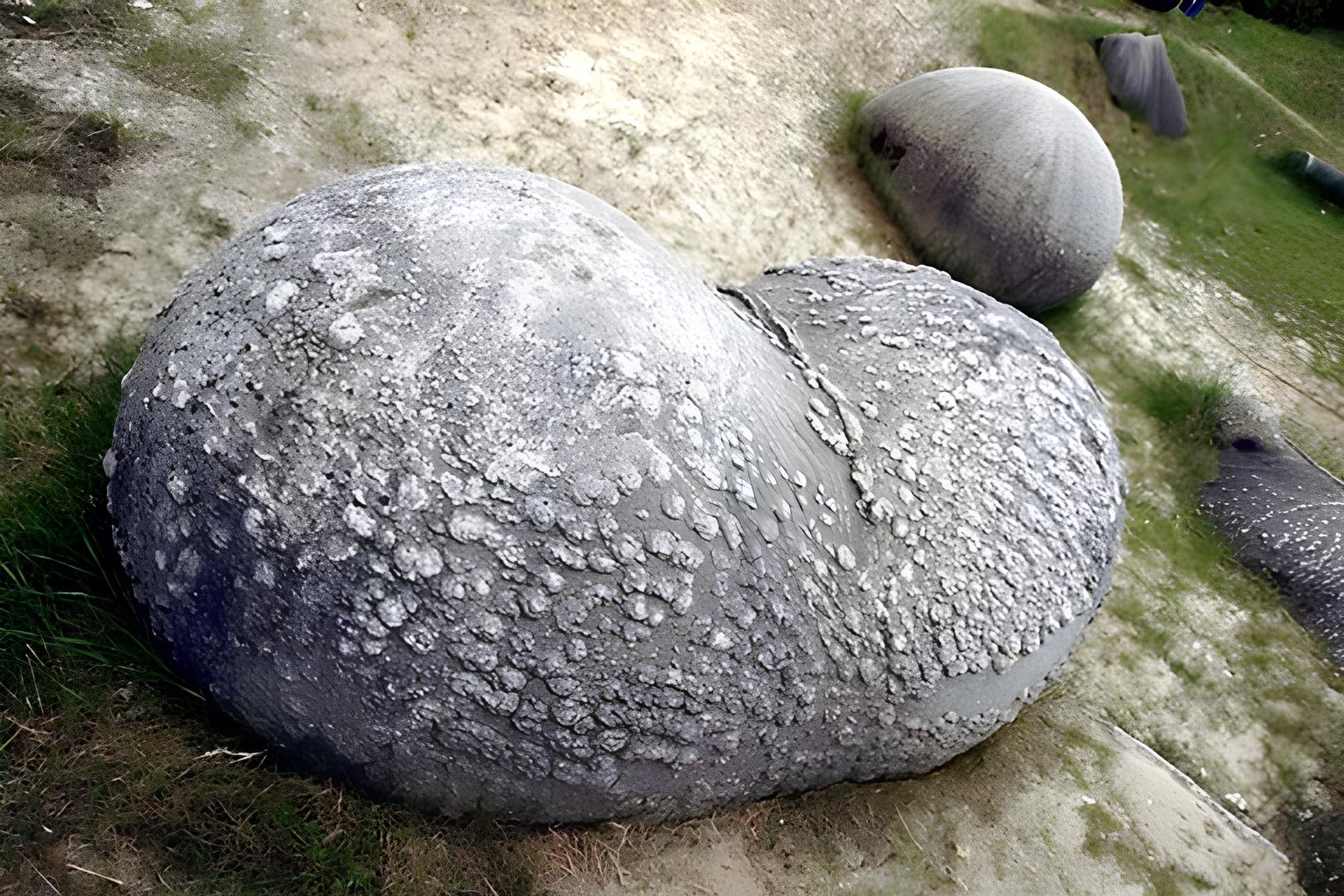Many people believe that Romania is home to vampires, werewolves, and other eerie, supernatural creatures. However, the country is home to a more perplexing object, and it is not a myth. When you discover about one of the world’s most unusual relics, known as “Living Stones,” you will be perplexed. It might be in a little town in the country.
Trovants are mystery stones discovered in the Romanian town of Costeti. The word was originally used in naturalist Gh. M. Murgoci’s work “The Tertiary in Oltenia” to describe cemented sand in Romanian geology.
People who see these mysterious rock formations in Romania are intrigued.


These rocks, unlike conventional stones, continue to grow, almost like living beings.
The trovants, according to hypothesis, are the product of earthquakes that ravaged the country six million years ago. Although the stones seem unusual in their cemented appearance, they piqued the interest of numerous experts from around the world. However, something even more strange is going on with the stones.
Even scientists are baffled by such perplexing behavior in a supposedly non-living entity.


These stones were nicknamed Living Stones and Stones that develop because of their capacity to develop.
The stones are also known as “The Stones that Grow” because they have the ability to grow in size as if they were living entities. When it rains, fascinating new forms arise on the surface, giving rise to several legends. When the dormant stones are exposed to moisture, they appear to spring to life and begin to develop. The mystery stones may range in size from a few millimeters to ten meters!
What really astounds me about these stones is their ability to travel from one location to another on their own.


This phenomenon caused scientists to scratch their minds even more.
But these Living Stones are also capable of amazing feats. They also MOVE ON THEIR OWN from one location to another, which surprised me! They may be difficult to see since they move so slowly, but they do move on their own!
Scientists are still unsure how these trovants grow and move on Earth. The capacity of the rocks to expand is assumed to be attributable to certain substances in their makeup. A theory was then proposed to explain this.
In the presence of rains, “any form of water rich in calcium carbonate is essential in forming a Trovant, and that is also the key to making the rock grow.” Trovants absorb the minerals in the rain after each strong rain storm. The minerals react with the chemicals already present in the stone, causing a reaction and pressure inside. The pressure causes the rock to expand and proliferate spontaneously from the center to the borders, at a pace of around 4-5 cm every 1000 years.”
These unusual stones are drawing a large number of tourists who are also perplexed by their structure.


These one-of-a-kind artworks are now stored in a nature reserve to be preserved.
Other theories for the trovant stones’ motions have been postulated. People have linked the Trovants mystery stones to magnetism, alien interference, and even strange energy vortexes that are claimed to exist nearby.
After splitting the stones in half, scientists determined that they are formed of cemented sands and mineral salts, providing a more reliable and rational explanation for the trovants’ behavior. They also contain strange internal rings that show their age, similar to tree rings. Then, specialists deduced that these mystery stones harbor inorganic life.
Geologists discovered a lot of rings in the stones, similar to those seen in trees, but they don’t know what they mean.


The trovants are mind-boggling, yet they are truly magnificent Mother Nature miracles.
Scientists believe that due of the mineral-salt content of the stones, the mysterious stones might grow in size. They explained that when the rock’s surface becomes wet, the chemicals within it spread, putting pressure on the sand to develop.
The “Muzeul Trovantilor” or “Trovants Museum Natural Reserve” or Colesti Museum was built in 2004 to protect the remarkable geological wonders. Nonetheless, it was revealed that these stones are not indigenous to Romania. Other countries that have similar rock formations include the Czech Republic, Kazakhstan, and Russia.






